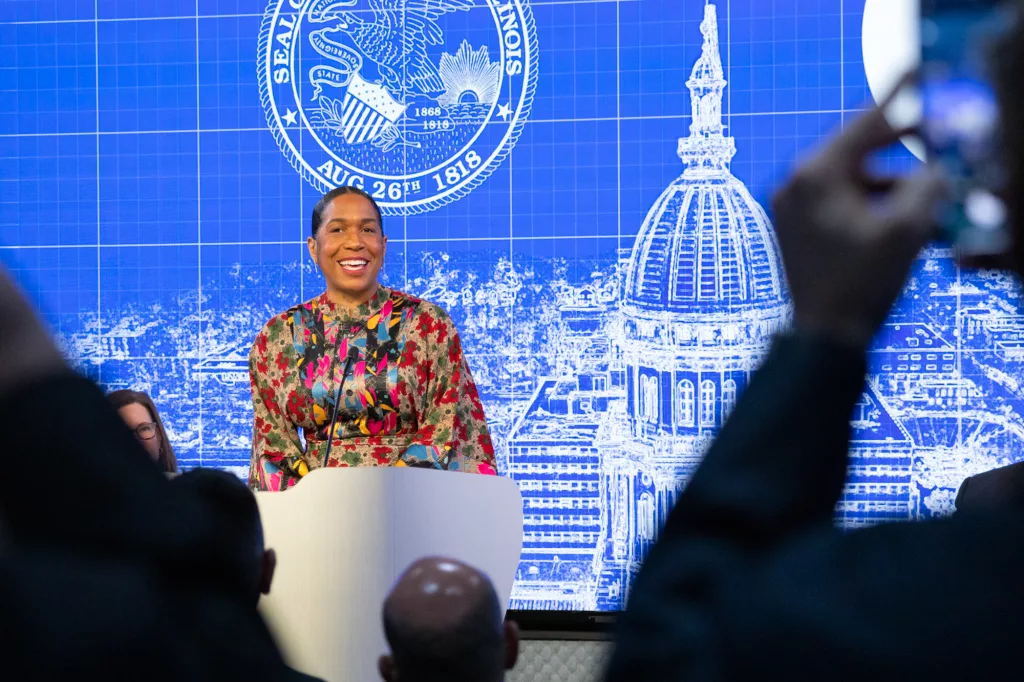
By DILPREET RAJU
Capitol News Illinois
draju@capitolnewsillinois.com
CHICAGO, Ill. (CNI) — For years, parents and providers have criticized what they see as a disorganized system for finding children mental health care in Illinois. State leaders are hoping a new partnership will change that.
The Illinois Department of Human Services is partnering with Google to launch a new centralized portal for children’s mental health care, state officials announced Monday.
Gov. JB Pritzker, executives from Google Public Sector and state legislators gathered at Google’s Fulton Market office in Chicago to announce that the portal, called BEACON, is slated to launch this summer. The governor said a centralized hub will make finding behavioral health resources much easier for parents and providers.
“If you’ve ever had to search for these resources, it’s difficult,” Pritzker said.
Beyond a central location to see what state agencies provide care, parents can “upload documents to avoid repetition when applying for all these services,” he said.
The platform will be accessible to parents, relevant health care providers and educators to monitor what services children may be eligible for from the state.
BEACON is the latest major project following last year’s Blueprint for Transformation, an executive report on children’s mental health care commissioned by Gov. Pritzker’s Children’s Behavioral Health Transformation Initiative.
That report highlighted five solutions for improving child mental health care:
- Adjust capacity of services
- Streamline processes of services
- Intervene earlier
- Increase accountability so there is transparency in services
- Develop agility to increase system responsiveness
Dana Weiner, lead author of the report and Chief Officer for the initiative, highlighted BEACON as a “state of the art tool” that will ease the logistical and emotional burden associated with seeking mental health care.
“Families that previously had to navigate multiple paths telling the story of their youth’s challenges dozens of times in the hope that a door to services would open now will have an option for a single centralized place to go for help,” Weiner said.
The initiative was launched in 2022 amid concern about the impacts of the COVID-19 pandemic on Illinois youth, a sentiment Lt. Gov. Juliana Stratton echoed on Monday.
“The last few years have been harder than anything that I’ve seen in my lifetime. The pandemic ripped away normalcy,” she said. “Understandably, we’ve seen a surge of mental health struggles in our youngest community members.”
IDHS’ Division of Mental Health contracted with Google Public Sector — a division within the tech giant that partners with governments and universities — to develop BEACON. Officials said the portal will be able to connect caregivers with the myriad health resources offered by an array of state agencies including, but not limited to, the Department of Children and Family Services, the Department of Human Services, and the Department of Healthcare and Family Services.
“In this age of technology, we have enormous power at our fingertips, and we are using it to nurture our children and create a healing-centered Illinois,” Stratton said. “The BEACON portal will centralize and simplify the process of securing mental and behavioral health intervention. It will ease the burden on our care providers.”
State Rep. Lindsey LaPointe (D-Chicago), a former social worker and chair of the House Mental Health and Addiction committee, said BEACON is a sign of progress in the state’s mental health system.
“If you’ve lived it, like many of us have, you know that nothing about the mental health care system is easy to navigate,” she said. “Things have gotten a whole lot better. We still have lots of hill to climb when it comes to children’s behavioral health access.”
Capitol News Illinois is a nonprofit, nonpartisan news service covering state government. It is distributed to hundreds of newspapers, radio and TV stations statewide. It is funded primarily by the Illinois Press Foundation and the Robert R. McCormick Foundation, along with major contributions from the Illinois Broadcasters Foundation and Southern Illinois Editorial Association.
